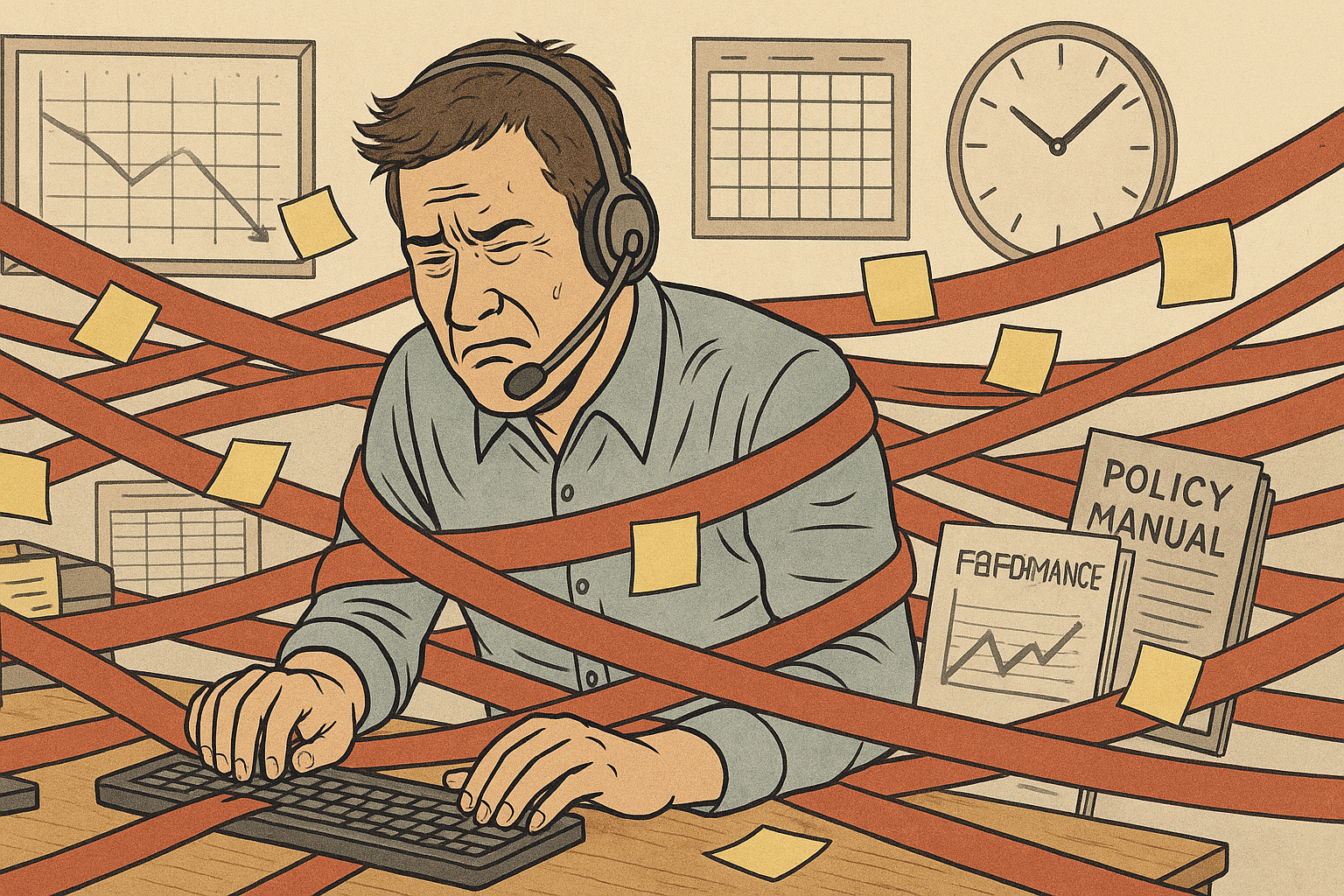
Once in a while, an executive will roll up their sleeves, drop into a folksy voice, and head down to the call center to “ride along” with a rep for an hour. They always come back to the boardroom acting like they just returned from a war zone. “I’ve seen things,” they’ll say.
Look, I commend the effort. But here’s the thing: these quick visits might show you what it’s like for your customers to interact with the call center. They don’t show you what it’s like to be a call center employee.
For that, you need something deeper than a corporate safari. You need immersion.
Back in the early days of The Honest Company, Jessica Alba used to sit with her call center agents and take calls with them on Fridays. It was a thing of beauty—you had to be there. But her center didn’t operate like most, and that’s no coincidence. She cared. She showed up. She listened. She built something different.
So why does this job suck so badly?
Let’s skip the usual suspects today: the customers from hell, the bad pay, the stingy incentives, and even the remote work debate. Let’s go straight to the bullseye.
The very structure of contact center work is engineered—almost comically—to induce maximum misery.
I’ve spilled a lot of ink on this over the last 15 years, but let me highlight just a few things for the uninitiated:
1. Federal prisoners have more freedom than most call center reps.
On a recent coaching call, a healthcare executive told me her top-performing agent just resigned. The reason? “Schedule adherence.” She even wrote a scorched-earth resignation letter about the injustice of it—she should’ve gone to law school.
For those new to the party: every contact center tracks how closely reps stick to their scheduled breaks, lunches, and training—to the minute. If your bestie wants to grab lunch at 1:00 but your schedule says 1:15, tough luck. You’ll get dinged.
Even your bathroom time is scheduled. And tracked.
2. Every word you say will be used against you.
At least once a week, reps are forced to sit through a playback of their worst call with a supervisor scoring them like it’s American Idol. But instead of Simon Cowell, it’s someone with a checklist and a frown.
My friend Brian is famous for this analogy: “Mr. CEO, imagine your every word is recorded, scored, and critiqued. Imagine being forced to follow a script. Imagine someone tracking your bathroom breaks. Sound like fun?”
3. From Day One, the goal is to erase your individuality.
New hires don’t go to training—they go to indoctrination. The entire process is designed to replace human intuition with industrialization. Agents are robotified with scripts and “soft skills” checklists until they’re predictable, mechanical, and easy to measure.
I’ve written about this for over a decade. And frankly, not much has changed.
So, where do we go from here?
Some folks—the tech delusionists—say, “Why bother fixing this job? AI is going to kill the call center anyway.” They argue automation is doing humanity a favor. No one wants these jobs, right?
Wrong.
No one wants a virtual ankle monitor. No one wants tools that fail them or policies that crush their soul. But the core of the job—helping people—is something humans have always wanted to do. Don’t tell me no one wants to talk to other humans. We’ve been doing that for thousands of years.
On the flip side, we’ve got the idealists who think we can fix all of this tomorrow with a few good-hearted tweaks. I’m going to channel C.S. Lewis here:
“No man knows how bad he is till he has tried very hard to be good.”
You have no idea how hard it is to fix this problem until you’ve really tried. I have. I’ve built tech for contact centers. I’ve run some of the biggest operations. I’ve advised clients across industries. This is a systemic issue.
And it persists for one reason: the solutions are obvious, but they go against the grain.
The CFO and CEO still see the call center as a cost center filled with low-skill labor, only necessary because automation failed. That mindset? That’s the problem.
Fixing it requires more than technology. It requires changing hearts and minds—with data, and with stories.
Which brings me to you.
Yeah, you—the one who actually wants good-faith solutions to this mess.
This whole “either/or” argument—automation OR humans—is a false choice. If you believe human-powered service and tech can coexist, you are the last hope. You’re the one who has to stand up and say:
We’re not anti-tech.
We’re pro-human.
And we believe technology should help people—not erase them.
If that’s you, I want to help.
That’s it for now.
Repost and follow me here.
And if you want to join the mission to fix it, head to waitingforservice.com.
Let’s go.

